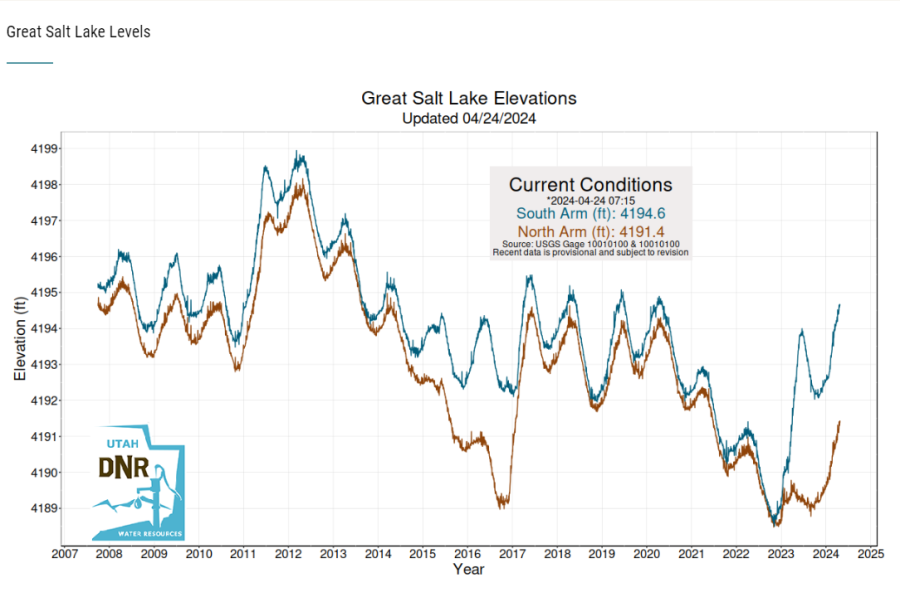This spring’s runoff could lift Great Salt Lake to levels not seen in a decade, but it’d still be below the ‘healthy’ threshold

SALT LAKE CITY (ABC4) — Utah’s spring runoff is well underway, and state officials say the water flowing into the Great Salt Lake could fill it to levels not seen in a decade.
Still, Great Salt Lake Commissioner Brian Steed told reporters in a virtual meeting Wednesday there’s still a long way to go before the lake could be considered ecologically healthy.
“We don’t anticipate the lake being recovered in a year or two,” he said. “We’re going to be in this for a long haul.”
Updated forecast says spring runoff could boost Great Salt Lake by 1.5 feet
Steed and other officials gave an update on the lake amid the spring runoff, noting that the south arm has risen to 4,194.6 feet in elevation. That’s up about six feet from late 2022, when the lake hit a record low and was on the verge of ecological collapse.
Last year’s record-breaking snowfall led to a massive influx of water into the lake, but most of it benefited the lake’s south arm as the breach in the causeway separating the two arms was closed.
This year, however, officials decided to leave the breach open, and this has resulted in the north arm rising roughly 2.5 feet over its record low point.
“The north arm has had a really remarkable recovery this year, which we were all very happy to see,” Steed said. “That’s great news.”

Although this month has been warm and dry, the state’s snowpack is still above average for this time of the year, and the reservoirs that drain into the Great Salt Lake are sitting around 85% full.
Already, water conservancy districts have released flows into the lake, and Reed said more releases are coming this summer.
Typically, the Great Salt Lake reaches its yearly peak around May 1, as evaporation causes the flat, high-elevation lake to shrink roughly two feet over the summer months. Due to the above-average snowpack, officials expect the Great Salt Lake to peak later than average this year.
Highest level in a decade?
Earlier this month, the Natural Resource Conservation Service estimated that the spring runoff could boost the Great Salt Lake by as much as 1.5 feet.
Tim Davis, the deputy Great Salt Lake commissioner, said the figure led him to guess (and hope) that the lake’s south arm could rise up to 4,196 feet in elevation this spring. The last time the lake was that high was in 2013.
Should the lake rise to that level, it’d still be roughly two feet below the bottom range of what’s considered ecologically healthy, which officials peg at 4,198 feet.
But the more the lake fills, the more it expands, Reed noted. This means that more water is required to continue filling the lake, particularly as evaporation takes a larger toll on the shallow waters of the newly-expanded areas.
‘Mega model’ under development will shape the Great Salt Lake’s future
As of now, officials don’t know how much water is needed for the lake to reach a healthy level. But as Reed currently sees it, the lake’s levels are back to what they were around 2019.
“Which is good, not great,” he said. “But we’ll take it.”
For the latest news, weather, sports, and streaming video, head to ABC4 Utah.

